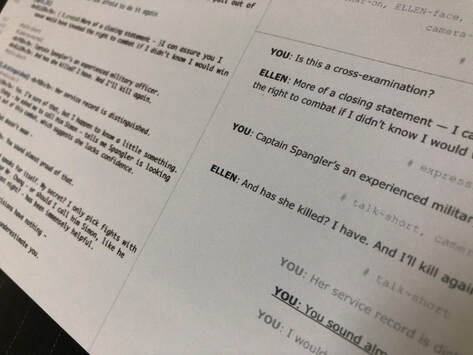|
When I’m working on a complex project like HRO, it’s always useful to have a conceptual anchor — an idea that can be used to guide design decisions and (hopefully) bind the disparate elements into a nice harmonious whole. Sometimes these design lodestones are there from the beginning and sometimes they evolve through the process. HRO’s anchor idea — “The Tonka Truck Lifestyle” arrived early — mostly as a result of UI experiments which then spilled out into the character and video “look and feel” as well as the story structures, puzzle style and sound design. For those of you who didn’t grow up with them, Tonka trucks are an awesome collection of kids’ toys — mostly revolving around the construction industry. Think dump trucks, backhoes and bulldozers. They were enormous and metal and you could leave them out in the yard in the rain. I loved them when I was a kid, probably because my dad operated heavy equipment for a living. So what is the “Tonka Truck Lifestyle” in the context of video game design? It’s an aesthetic that favors choices which are robust and chunky. It’s fun. It’s brightly colored. It’s hard to break. It’s really easy to know what to do with it. It’s uncomplicated. It’s bold. It’s big gestures and lots of imagination. The application of this idea is easiest to see in the game UI. Jewel-hued buttons clunk and ping. Dials are enormous. Nothing’s fussy. Clarity is key. Less is more, as long as the less you’re left with looks fun. And this idea can also be seen in the characters — constructed with loads of simple geometrics and a limited palettes of brights — and the universe at large. Planets are bold abstracts. Interiors are flat and put together with simple planes and minimal animation. This aesthetic also extended into the audio design. The aforementioned big, boxy buttons yield chunky, plasticy sounds when pressed. The UI effects themselves are built from the toys that evoke the “Tonka” days of our childhood. Sampling a vintage Fisher Price Tape Recorder lent just the right level of satisfaction to pressing the fun, oversized controls. And to really capture that feeling, we extended the Unity Button system to provide audio both when a button is pressed and when it's released (why miss an opportunity for more “Tonka,” ammirite?) The “Tonka" idea even crept into the design of the solutions available to players at the end of each act. While there are some solutions that players might be tempted to call “puzzles” in the traditional sense, by-and-large we opted to lean away from the smarty-pants and sometimes irritating brain teaser. Everything players need to choose any of the solutions in the game is included in the game. And there are always “simple” solutions provided if you just aren’t in the mood to play detective and hunt down that character’s home planet, or work through an anagram. If that’s your jam, great! If not, you will always have other solutions which require less legwork to choose from to get back to the story. Of course, the simpler solution might not lead to the same next act in the story arc… but that’s a post for another day. As someone who makes everything more complicated than it needs to be, this approach has been a real gamechanger for me. It’s fun to make something fun (who knew!) So we hope you’ll join us in this candy-colored universe and forgive us for making a game that is maybe a little less “serious.” See you in space.
0 Comments
A text-based adventure game, like HRO, requires a lot of writing — this is probably not a surprise. What was a surprise was finding a new tool to generate, edit and integrate the lots and lots of written bits into the Unity engine to make an actual playable game. That tool is INK, a free text-creation tool developed and distributed by our friends at Inkle Studios — you probably know them for "Heaven’s Vault" or their recently released “Overboard” which is getting a lot of well-deserved critical attention at the moment — it’s a gem and a must-have if you love murder mysteries. After fifteen years of writing, finding a new process is not an easy thing. But Ink’s advantages made it well-worth scaling the small learning-curve. Yes, at first glance it looks like a programming language, and there is some architecture to get used to. But once you have the basics down, Ink streamlines the writing process, especially editing, to the point where I’m not sure we could have created HRO without it. Branching text — like conversations — can be easily read and edited because Ink allows you “play” the scenes in a separate window while viewing and editing the code in real time — an intuitive, natural reading process that is also a tremendous time saver. Ink also facilitates integration of the JSONs you create into your Unity framework by allowing the author to set flags that trigger actions in the Unity game. So the animation of a character you’re having a conversation with will change facial expressions in coordination with the dialogue, or buttons on the player’s console can be made to light up at the appropriate time, that sort of thing. Plus there’s a robust and clear system of flagging errors within Ink, so it’s easy to troubleshoot and tougher to construct files which don’t work at run-time — though I have managed that several times thanks to my own coding terribleness. Yes, we’re officially fanbois. If you’re a creator of interactive fiction, we highly recommend checking out Ink. |
AUTHORWorthing and Moncrieff, LLC is an independent developer of video game stories founded in 2015. ARCHIVES
December 2022
|





 RSS Feed
RSS Feed
